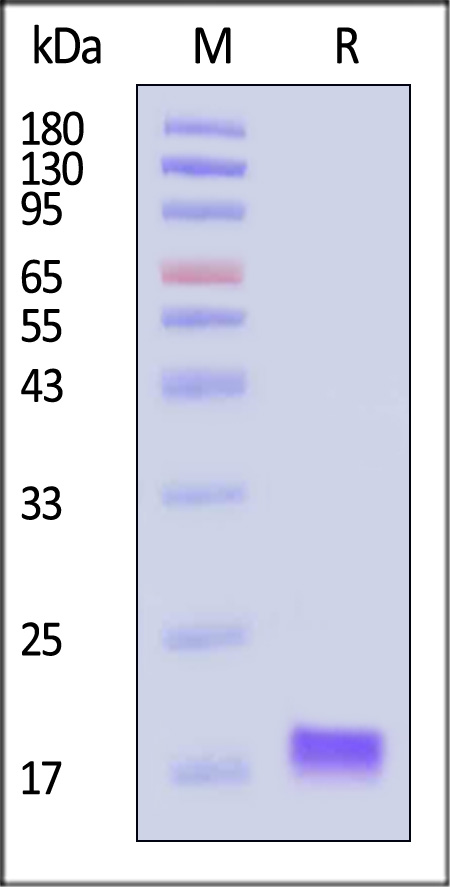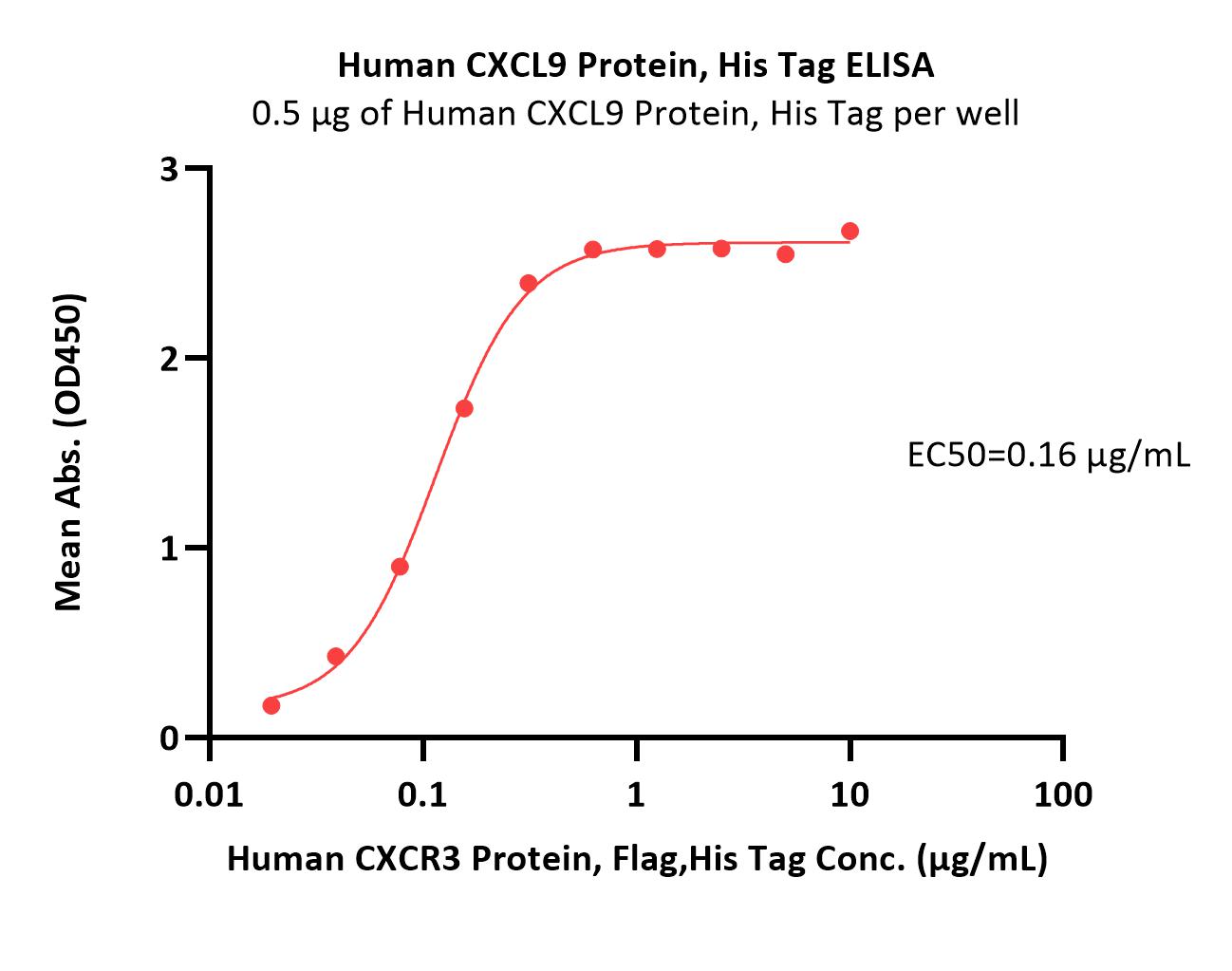分子别名(Synonym)
CMK, Humig, MIG, SCYB9, crg-10
表达区间及表达系统(Source)
Human CXCL9 Protein, His Tag (CX9-H51H3) is expressed from E. coli cells. It contains AA Thr 23 - Thr 125 (Accession # Q07325).
Predicted N-terminus: Met
Request for sequence
蛋白结构(Molecular Characterization)

This protein carries a polyhistidine tag at the C-terminus.
The protein has a calculated MW of 20.7 kDa. The protein migrates as 17-20 kDa when calibrated against Star Ribbon Pre-stained Protein Marker under reducing (R) condition (SDS-PAGE).
内毒素(Endotoxin)
Less than 1.0 EU per μg by the LAL method.
纯度(Purity)
>90% as determined by SDS-PAGE.
制剂(Formulation)
Lyophilized from 0.22 μm filtered solution in PBS, 0.5 M NaCl, 0.5 M Arginine, pH7.4 with trehalose as protectant.
Contact us for customized product form or formulation.
重构方法(Reconstitution)
Please see Certificate of Analysis for specific instructions.
For best performance, we strongly recommend you to follow the reconstitution protocol provided in the CoA.
存储(Storage)
For long term storage, the product should be stored at lyophilized state at -20°C or lower.
Please avoid repeated freeze-thaw cycles.
This product is stable after storage at:
- -20°C to -70°C for 12 months in lyophilized state;
- -70°C for 3 months under sterile conditions after reconstitution.
电泳(SDS-PAGE)

Human CXCL9 Protein, His Tag on SDS-PAGE under reducing (R) condition. The gel was stained with Coomassie Blue. The purity of the protein is greater than 90% (With Star Ribbon Pre-stained Protein Marker).
活性(Bioactivity)-ELISA

Immobilized Human CXCL9 Protein, His Tag (Cat. No. CX9-H51H3) at 5 μg/mL (100 μL/well) can bind Human CXCR3 Protein, Flag,His Tag (Cat. No. CX3-H52D5) with a linear range of 0.019-0.313 μg/mL (QC tested).
Protocol
背景(Background)
CXCL9 is a small cytokine belonging to the CXC chemokine family that is also known as monokine induced by gamma interferon (MIG). CXCL9 is a chemokine that plays a role in immune responses, it can induce chemotaxis, promote differentiation and proliferation of leukocytes, and cause tissue extravasation. CXCL9 regulates immune cell migration, differentiation and activation by binding to CXCR3 receptor, such as CTLs, NK cells, NKT cells and macrophages. CXCL9 also participates in Th1 polarization and IFN-γ response.























































 膜杰作
膜杰作 Star Staining
Star Staining











